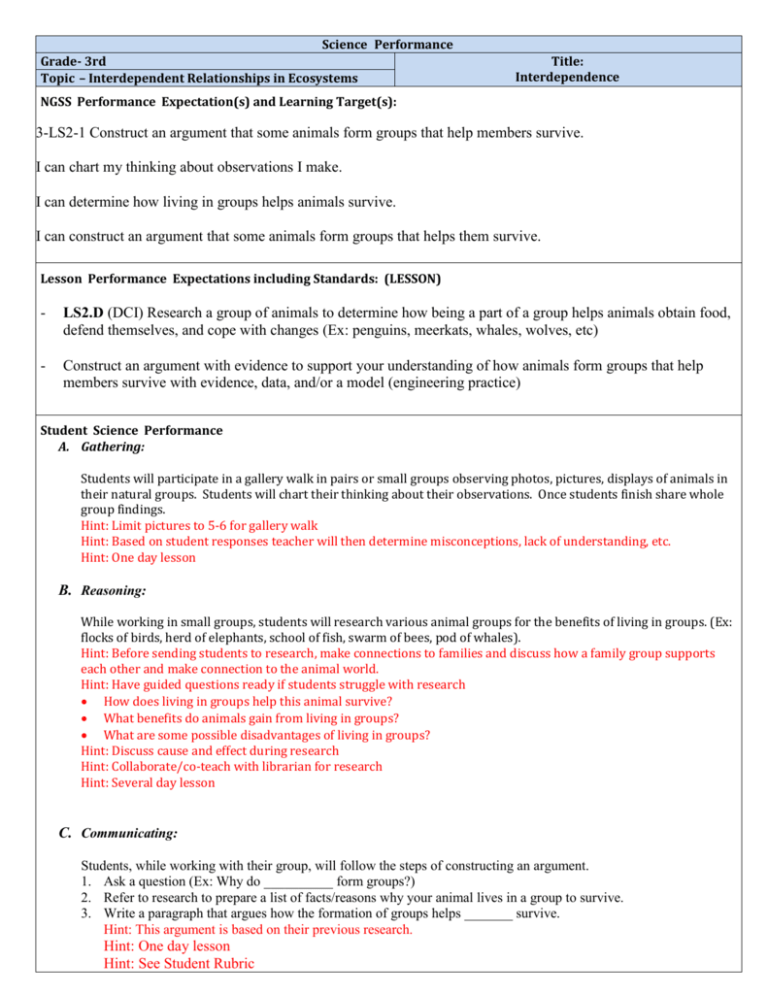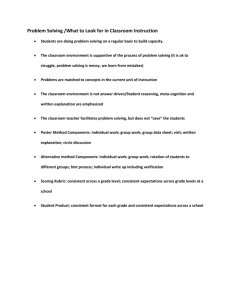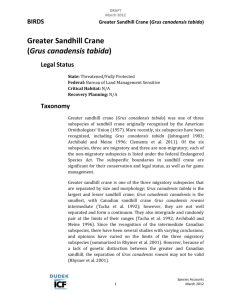Grade 3 - Bullitt County Public Schools
advertisement

Science Performance Grade- 3rd Topic – Interdependent Relationships in Ecosystems Title: Interdependence NGSS Performance Expectation(s) and Learning Target(s): 3-LS2-1 Construct an argument that some animals form groups that help members survive. I can chart my thinking about observations I make. I can determine how living in groups helps animals survive. I can construct an argument that some animals form groups that helps them survive. Lesson Performance Expectations including Standards: (LESSON) - LS2.D (DCI) Research a group of animals to determine how being a part of a group helps animals obtain food, defend themselves, and cope with changes (Ex: penguins, meerkats, whales, wolves, etc) - Construct an argument with evidence to support your understanding of how animals form groups that help members survive with evidence, data, and/or a model (engineering practice) Student Science Performance A. Gathering: - Students will participate in a gallery walk in pairs or small groups observing photos, pictures, displays of animals in their natural groups. Students will chart their thinking about their observations. Once students finish share whole group findings. Hint: Limit pictures to 5-6 for gallery walk groups Hint: Based on student responses teacher will then determine misconceptions, lack of understanding, etc. Hint: One day lesson B. Reasoning: While working in small groups, students will research various animal groups for the benefits of living in groups. (Ex: flocks of birds, herd of elephants, school of fish, swarm of bees, pod of whales). Hint: Before sending students to research, make connections to families and discuss how a family group supports each other and make connection to the animal world. Hint: Have guided questions ready if students struggle with research How does living in groups help this animal survive? What benefits do animals gain from living in groups? What are some possible disadvantages of living in groups? Hint: Discuss cause and effect during research Hint: Collaborate/co-teach with librarian for research Hint: Several day lesson C. Communicating: Students, while working with their group, will follow the steps of constructing an argument. 1. Ask a question (Ex: Why do __________ form groups?) 2. Refer to research to prepare a list of facts/reasons why your animal lives in a group to survive. 3. Write a paragraph that argues how the formation of groups helps _______ survive. Hint: This argument is based on their previous research. Hint: One day lesson Hint: See Student Rubric Assessment of Student Learning (Formative and Summative): Student Rubric: Teacher Rubric: Independent Assessment: Students will be given a passage and construct an argument that some animals form groups that help them survive. Passage: Imagine seeing a flock of thousands of bird almost as tall as you are! You could if you visited the Platte River in Nebraska in spring. That’s when as many as 300,000 sandhill cranes come together as they migrate north. Sandhill cranes fly, flock, and nest in groups of different sizes. In summer, the sandhill cranes settle in marshes in the north to lay eggs and raise young. Pairs of parents care for the egg and chicks for up to 10 months after hatching. In spring, sandhill cranes travel north to nest. In the fall, they travel south to warmer places to find food. The birds flock together in very large groups as they migrate. In migratory flight, sandhill cranes fly in V-shape formations. Task: Using the information from above, write a paragraph that argues how the formation of groups helps sandhill cranes survive. Provide evidence from the passage to support your argument. Critical Vocabulary: Argument Survive Evidence Predator Prey Various grouping names – for example: pack, flock, swarm, herd Coping Protection Defending Science Essentials (Student Performance Expectations From Appendix C, D, E) Science Practices Make Observations * Participate in a gallery walk in pairs or small groups observing photos, pictures, displays of animals in their natural groups. Students will chart their thinking about their observations. Research * Conduct research in groups about a specific animal group Construct an Argument * Construct an argument that some animals form groups that helps them survive Crosscutting Concepts Cause and Effect * Discuss during research cause and effect relationships (For example: how animals travel in groups for protection during migration) Disciplinary Core Ideas Social Interactions and Group * Animals travel in groups to obtain food, defend themselves, and cope with changes Behavior Modifications and Accommodations for students: As needed Follow Up Assignment/Project/Work: To be determined based on student’s formative assessments (see rubrics embedded) (B. Moulding, 2011) Modified/Adapted for Bullitt County Schools by Terry L. Price (2015)







